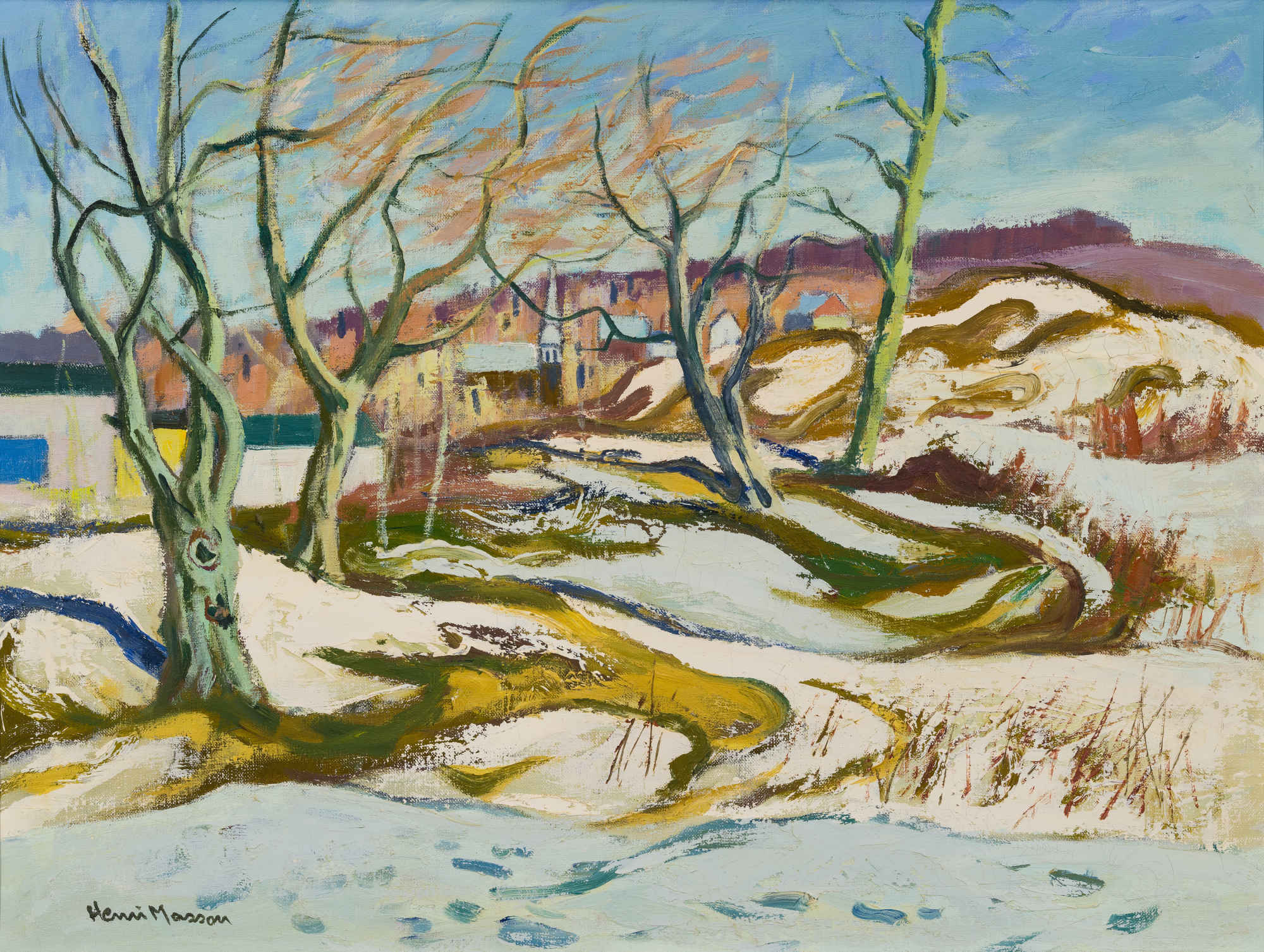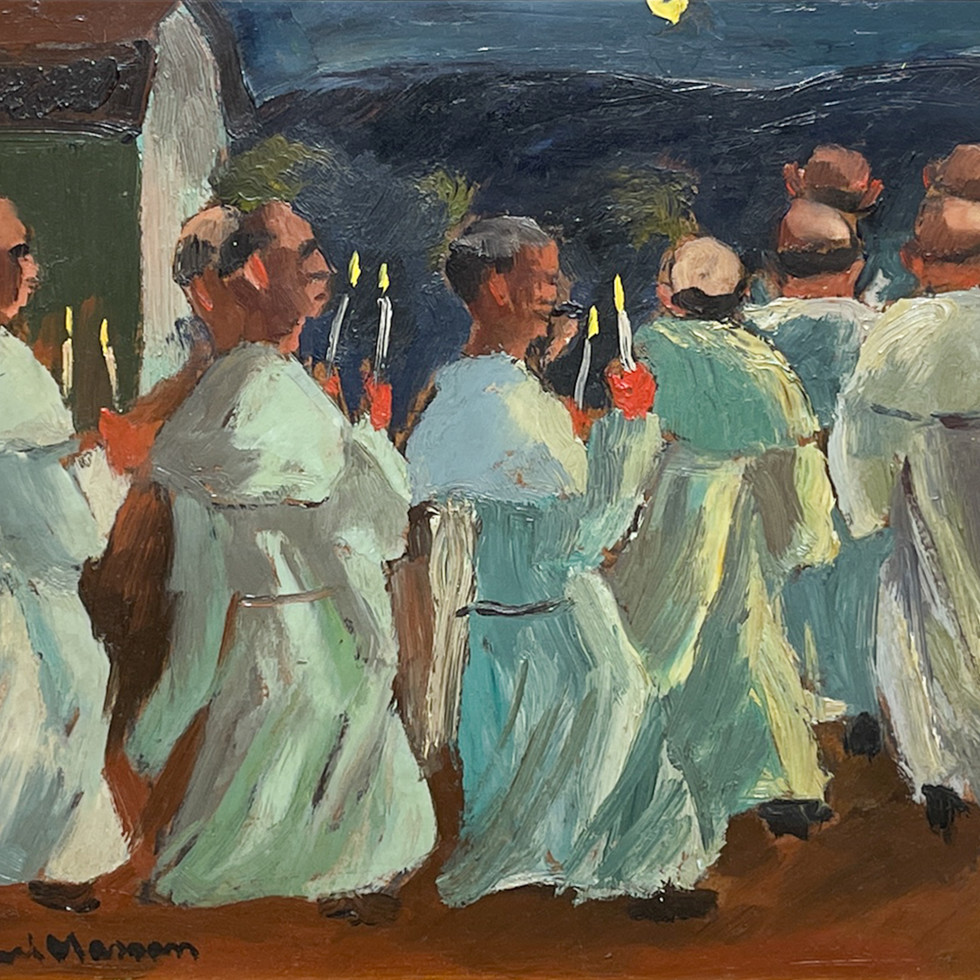Art canadien classique
Old Chelsea, Québec, 1979
61 x 79 cm
Inscriptions
signed, ‘Henri Masson’ (lower left); titled, ‘OLD CHELSEA QUÉ.’ (verso, upper horizontal stretcher, centre); signed and dated, ‘Henri Masson / 79’ (verso, upper horizontal stretcher, right)Provenance
Walter Klinkhoff Gallery Inc., Montreal
Private collection, Montreal
Henri Masson immigrated to Canada from Belgium in 1921. His career straddled the second world war, and he became highly sought after among collectors, and a major force in 20th Canadian art. Masson exhibited extensively in Canada and internationally from the 1930s, and his professional representation included Laing Galleries, Galerie L'art Francais, and Galerie Walter Klinkhoff.
As early as 1934, Masson earned the recognition of Dr. Marius Barbeau, one of the founders of Canadian anthropology and a significant figure at the National Museum of Canada (today Canadian Museum of History). Barbeau wrote:
“His field of action in the neighbouring landscape was, and is still, the rolling hills of Gatineau and Petit-Nation, north of the Ottawa River, the human toil, prayer and play of their settlers – mostly French-speaking, and the pastimes and occupation of the townsfolk in industrial Hull [...] Many canvases of Masson’s are fine and original...”
As is evident in the present work, Old Chelsea, Quebec, Masson was inspired by the modernist landscape painting tradition forged by the Group of Seven, and the terrain of his adopted home. Taking that modernism even further than most of his contemporaries, his oeuvre can be summarized as a celebration of everyday life, with subjects extending beyond landscapes to musicians and choirs, as well as hockey games and still lifes.
Old Chelsea is located just outside of Hull, and about 15 km from Ottawa.
Jonathan Klinkhoff















